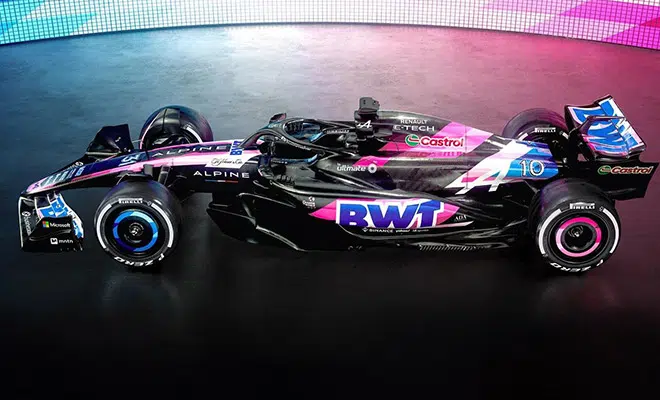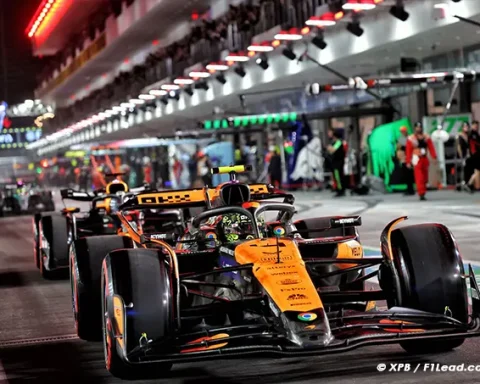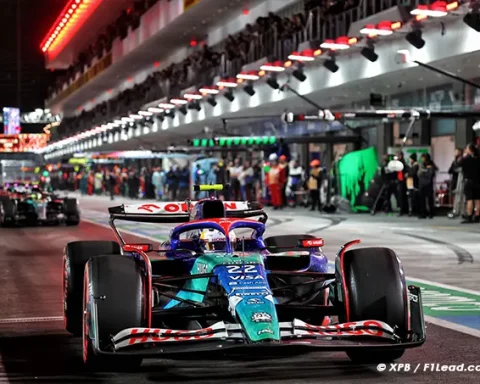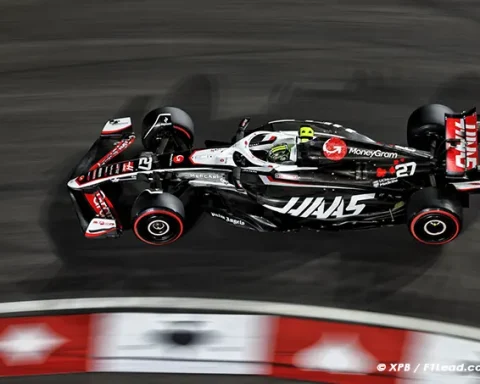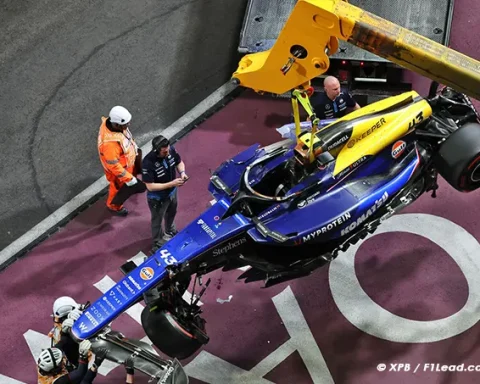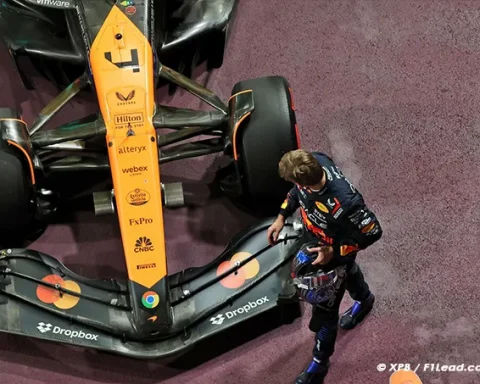Alpine F1 introduces the A524, a technical marvel revealed by Matt Harman, highlighting its 3500 km of rigorous testing and innovative design.
Alpine F1 unveiled its single-seater for the new Formula 1 season, the A524, this Wednesday at Enstone. A car that stands out with a predominantly black livery, but above all, by numerous technical innovations.
Technical director, Matt Harman, disclosed that “only the steering wheel” remained from the A523, taking time during the presentation to explore the single-seater technically, to reveal the employed solutions.
“I would like to thank everyone from Enstone and Viry, as it has been a huge challenge to ensure this car was here,” Harman stated. “Starting at the front, the A523 did not deliver what we hoped.”
“We had to understand what we needed to do differently, and we had to think about what we were doing better before. It’s a bold approach; we wanted to work on all parts of the car to not have a performance ceiling as with the A523.”
The A524’s front wing, suspension, and brakes
At the front, last year’s raised wing is replaced by a lower one, similar to the A522 from 2022, but it anchors on a much wider nose than its two predecessors.
The suspension has evolved little, not changing in geometry, notably retaining a pushrod system, but it’s refined and adapted to the car’s aerodynamics. The brakes have also changed to enhance the single-seater’s efficiency and cooling.
“The front wing will provide more downforce, good speed, and better balance. It’s tricky to validate the homologation tests of the nose; it takes good work to have that and a good structure.”
“The braking system is very complex; it needs to be consistent and precise, and Esteban and Pierre require it to be. But it’s also an aero element as we must control the temperature and cool the discs and brake ducts, and manage the tire temperature.”
“This plays a role in how heat passes through the car, and we’ve worked a lot on this. We’ve ensured the aerodynamics are adapted to the rest of the car. The suspension concept is similar, but it’s an optimization. We’ve slightly changed it to have more flexibility and control.”
Alpine has completely redesigned the chassis of its F1 car
Harman also reveals that the chassis has been changed, providing a completely new work basis to then evolve the single-seater. He jests that the drivers must be comfortable, including Esteban Ocon with his height of 1.86 meters.
“One of the areas we focused on is the chassis. We made sure that the drivers are comfortable, Esteban rest assured, you’ll be fine in the car! It’s necessary for their ability to drive, and we also need to push the structures and improve airflow under the car.”
“Fundamentally, the chassis is designed to give us maximum volume for our aerodynamicists to express themselves, not just on the launch car, but on the first, second, third, and fourth evolutions.”
“The engine is homologated, but we can ensure to do several things to best use it. It’s very important to do, we do a lot of calculations on how we arrange the bodywork around the engine.”
Better integrating the engine and balancing the A524
The engine doesn’t change anymore, as Harman specified, but its integration remains a crucial parameter for Alpine F1, and the team was thus able to modify the positioning of certain elements, notably the battery, to improve the car’s balance.
“We did a lot of calculations to understand how to benefit from the work done on the engine. For example, we integrated the engine’s exhaust outlet within the suspension and next to the gearbox.”
“We also moved the battery pack back, to help with the weight distribution on the car. It’s a significant weight, so it helps to move it in the right direction.”
“Another challenge with racing cars is that we want an optimal mass. We want to be under the weight, but close to it so we can use the mass for performance. So, it’s important to optimize this, and we’ve done it. We removed mass from the transmission, which required a lot of validation.”
A rear part more adapted for the entire season
The A524 looks impressive from the back, with a highly worked beam wing (the horizontal fin at the base of the rear wing) leaving space to position the exhaust in its center.
Harman reveals that the team has placed a lot of emphasis on the overall efficiency of this exhaust, in harmony with the suspension, diffuser, and wing: “We’ve worked extensively on the test bench, allowing us to cover more than 3500 kilometers, which represents incredible work between the engineers at Viry and Enstone.”
“The rear suspension has been completely revised, we have a new kinematics that allows us to take advantage of how the car behaves on track. We’ve also made sure to optimize the suspension aerodynamically. The aerodynamics were slightly sacrificed for the kinematics, but we are confident of being able to recover that gradually.”
“The rear wing is an area where we could have done better last year. There were circuits where we weren’t efficient enough in the lift-to-drag ratio. This was particularly the case at Monza. We’ve learned from this, designed new things, went to Las Vegas, and understood things we’ve incorporated into this car.”
“This year, the car will have a rear wing more adapted to each event, to have a better balance between aerodynamics and drag, to achieve optimal lap times. The rear brake system is similar to the front, whether it’s temperature management or precision, it’s the same as the front.”
A very important “body under the body”
The floor has undergone a total redesign, and it can be seen in the way it fits the shapes of the car while featuring complex variations. Harman describes the importance of this part, as well as the evolution of the car to allow more freedom in the design of the floor, both lower and upper.
“Finally, we look at the floor and the bodywork. We know the floor produces a large part of the aerodynamic downforce, and a major part of our work has been to improve the spaces and volume to better work on this floor.”
“You will also see on the edges of the floor a fantastic design, we have very interesting elements on the floor that allow us to do our best in combination with the bodywork.”
“Under the bodywork, there’s another bodywork you can’t see and which allows us to control the airflow in the car, from the front where it enters to the back. This optimizes the cooling of the car, and it will be optimized to have more aerodynamic performance.”
Alpine A524 Technical Secrets. Alpine A524 Technical Secrets. F1 2024 Alpine A524 Technical Secrets
- ReadMore>Ocon Eyes Mercedes Seat, Could Succeed Hamilton
- following us on Facebook and Twitter
